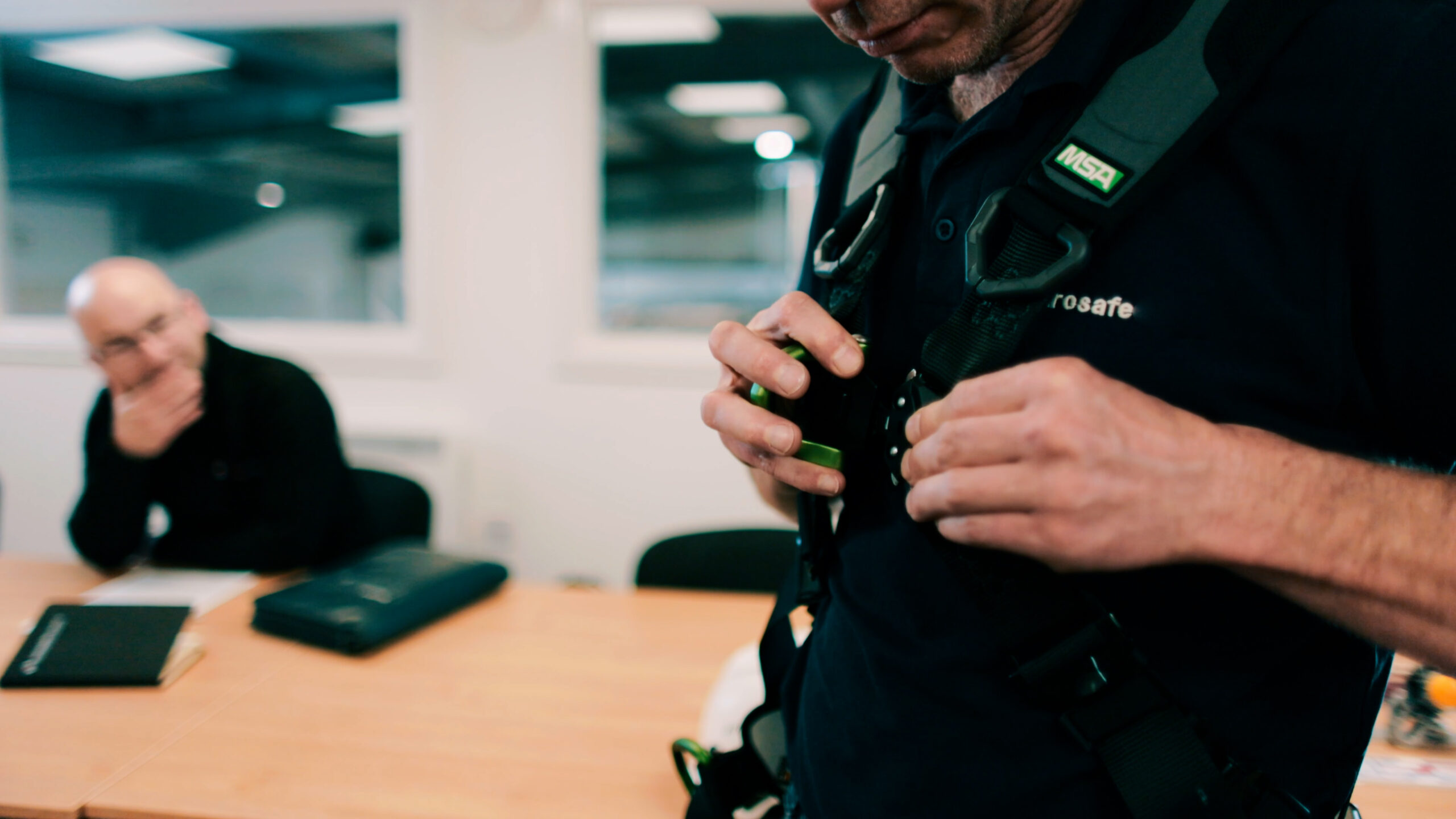
Working at Height in Telecommunication Industry
Working at height is a fundamental aspect of the telecommunication industry, involving activities such as installing and maintaining antennas, towers, and satellite dishes, as well as conducting repairs and inspections on elevated structures. These tasks expose workers to various risks and hazards that require stringent safety measures and specialized training to mitigate.

Key Risks and Hazards
Falls from Height
- Primary Risk: Falls from height are the leading cause of serious injuries and fatalities in the telecommunication sector. Workers performing tasks on towers, rooftops, or elevated platforms are particularly vulnerable.
- Contributing Factors: Factors such as unstable surfaces, lack of proper guardrails, inadequate personal protective equipment (PPE), and adverse weather conditions can significantly increase the risk of falls.
Environmental Factors
- Weather Conditions: Outdoor tasks expose workers to weather conditions like wind, rain, snow, and ice, which can create slippery surfaces and reduce stability.
- Poor Lighting: Insufficient lighting, especially during night shifts or in remote locations, can impair visibility and increase the likelihood of accidents.
- Extreme Temperatures: Working at height can expose workers to extreme temperatures, leading to heat stress or hypothermia.
Structural Hazards
- Aging Infrastructure: Telecommunication towers and other structures may suffer from wear and tear, leading to compromised structural integrity and increasing the risk of accidents.
- Complex Geometries: The intricate design of some telecommunication equipment can necessitate awkward positioning and movements, increasing the risk of slips, trips, and falls.
Electrical Hazards
- Proximity to Power Lines: Working near live power lines or electrical equipment poses a risk of electric shock or electrocution.
- Electrical Equipment: Workers may encounter live electrical circuits within telecommunication installations, requiring careful handling to avoid accidents.
Falling Objects
- Tools and Materials: Tools, equipment, or materials used at height can become hazardous if dropped, posing a risk to workers below.
- Debris: Loose debris or unsecured components can fall from elevated positions, leading to potential injuries.
Fatigue and Human Error
- Physical and Mental Strain: The demanding nature of working at height can lead to fatigue, increasing the likelihood of mistakes and accidents.
- Inadequate Training: Insufficient training on height safety procedures and equipment can result in improper practices and increased risk of incidents.
Importance of Proper Training
Given the significant risks associated with working at height in the telecommunication industry, proper training is essential to ensure the safety of personnel. Effective training programs should cover:
- Hazard Identification: Recognizing and assessing potential risks associated with working at height, including environmental, structural, and electrical hazards.
- Use of PPE: Correct use of personal protective equipment, such as harnesses, helmets, and fall arrest systems, to prevent injuries.
- Safety Procedures: Implementing safe work practices, including the use of guardrails, safety nets, secure access points, and proper ladder use.
- Emergency Response: Training in rescue and emergency procedures to ensure prompt and effective response in case of an accident.
- Compliance with Regulations: Understanding and adhering to industry-specific regulations and standards to ensure legal compliance and workplace safety.
Eurosafe’s Training Solutions
Eurosafe offers specialised MSA Latchways Installer training courses tailored to the telecommunication industry, addressing the unique challenges of working at height.
Browse MSA Latchways Installer Training Courses
By investing in proper training and safety measures, telecommunication companies can create a safer working environment, protect their workforce, and maintain operational efficiency. Our wide range of Height Safety training programmers equip telecoms professionals with the knowledge and skills necessary to work safely and efficiently focusing on hazard identification, use of PPE, safety procedures, and emergency response.

















